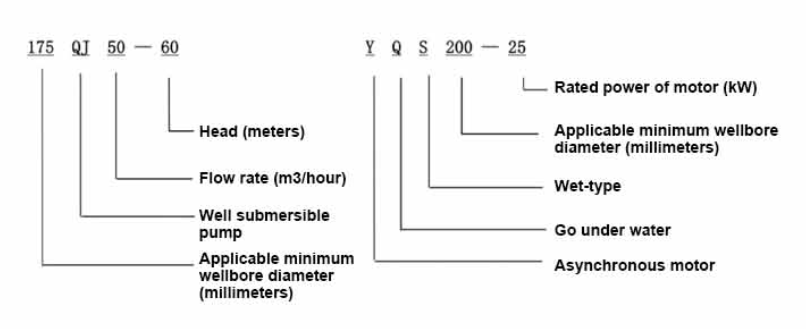Rhag . 09, 2024 23:02 Back to list
Submersible Pumps for Efficient Water Management in Various Applications
Understanding Submersible Pump Water Filling Systems
Submersible pumps play a critical role in numerous applications, particularly in environments that require efficient water extraction and management. These pumps are designed to be submerged in the fluid they are intended to pump, and their unique design enables them to operate underwater, which makes them invaluable in a variety of settings, from residential water wells to industrial applications.
What is a Submersible Pump?
A submersible pump is a device that is driven by an electric motor. It is submerged in the fluid and pushed or pulled to transport that fluid to the desired location. In many cases, they are used for water-filled systems, which can include anything from irrigation systems for agriculture to drainage systems for construction sites. The main advantage of this type of pump lies in its ability to push water to the surface without the operational limitations that external pumps face, such as cavitation and airflow issues.
The Mechanism Behind Submersible Pumps
A submersible pump consists of several key components the motor, the pump mechanism (impeller and diffuser), and a seal to protect the motor from water exposure. When activated, the motor’s impeller rotates, creating a pressure difference that draws water into the pump. The water is then pushed through a discharge pipe, allowing for efficient delivery to a tank, pipeline, or other systems. The seal is crucial; it prevents water from entering the motor compartment, thereby extending the lifespan of the pump and ensuring reliable operation.
Applications of Submersible Pumps
1. Well Water Extraction Submersible pumps are widely used in residential and agricultural well systems to extract groundwater. Their ability to operate deep underwater makes them ideal for accessing water reserves in deep wells.
2. Wastewater Management These pumps are also essential in wastewater treatment facilities where they help in moving sewage and wastewater to treatment units.
3. Flood Control In areas prone to flooding, submersible pumps are deployed to mitigate the impact by removing excess water. This is particularly important in storm drainage systems and emergency responses.
4. Irrigation Systems Farmers rely on submersible pumps for efficient irrigation practices. They ensure a consistent supply of water to crops, which is vital for agricultural productivity.
5. Aquaculture In fish farming, submersible pumps help maintain water quality by circulating water and ensuring adequate oxygenation.
Benefits of Using Submersible Pumps
submersible pump water filled

- Efficiency Submersible pumps are highly efficient in moving large volumes of water quickly
. Their design minimizes energy consumption while maximizing output.- Versatility These pumps can handle various liquids, including clean water and sewage, making them suitable for diverse applications.
- Easy Installation Many submersible pumps can be easily installed with minimal infrastructure changes, especially in existing wells or systems.
- Reduced Noise Because they are submerged, submersible pumps operate quietly compared to surface pumps, making them ideal for residential areas or sensitive environments.
Considerations When Choosing a Submersible Pump
When selecting a submersible pump for water-filled systems, several factors should be taken into account
1. Depth of Water Source Understand how deep the water source is, as this will influence the type of pump required.
2. Flow Rate Determine the required flow rate for your application to choose a pump that can meet those demands efficiently.
3. Pump Material Consider the materials used in the pump's construction, especially if the water has corrosive properties.
4. Power Supply Ensure you have an adequate power supply to operate the pump, whether it is electric or powered by another source.
5. Maintenance Needs Look for pumps that are easy to maintain and have a good reputation for reliability.
Conclusion
Submersible pump water-filled systems are a fundamental part of modern water management. Their ability to operate efficiently and effectively in submerged environments makes them invaluable for various applications. By understanding how these pumps work, their benefits, and important considerations when selecting a pump, users can make informed decisions to meet their specific water management needs.
-
Water Pumps: Solutions for Every Need
NewsJul.30,2025
-
Submersible Well Pumps: Reliable Water Solutions
NewsJul.30,2025
-
Stainless Steel Water Pumps: Quality and Durability
NewsJul.30,2025
-
Powerful Water Pumps: Your Solution for Efficient Water Management
NewsJul.30,2025
-
Oil vs Water Filled Submersible Pumps: Which is Better?
NewsJul.30,2025
-
Deep Well Pumps: Power and Reliability
NewsJul.30,2025
-
 Water Pumps: Solutions for Every NeedWhen it comes to handling dirty water, the dirty water pump is a must-have.Detail
Water Pumps: Solutions for Every NeedWhen it comes to handling dirty water, the dirty water pump is a must-have.Detail -
 Submersible Well Pumps: Reliable Water SolutionsWhen it comes to ensuring a reliable water supply, submersible well pumps are a top choice.Detail
Submersible Well Pumps: Reliable Water SolutionsWhen it comes to ensuring a reliable water supply, submersible well pumps are a top choice.Detail -
 Stainless Steel Water Pumps: Quality and DurabilityWhen it comes to choosing a water pump, the stainless steel water pump price is a crucial factor.Detail
Stainless Steel Water Pumps: Quality and DurabilityWhen it comes to choosing a water pump, the stainless steel water pump price is a crucial factor.Detail
